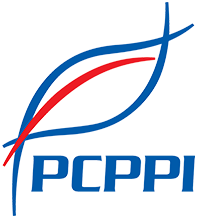Pepsi Philippines
 | |
| Company type | Subsidiary, Public |
|---|---|
| PSE: PIP | |
| Founded | 1989 |
| Headquarters | 26th Floor, Filinvest Axis Tower, Two Building Northgate Cyberzone, Filinvest City, Alabang, Muntinlupa City, Metro Manila, Philippines |
Area served | Philippines |
Key people | Frederick D. Ong (President and CEO) |
| Products | Soft drink |
| Parent | Lotte Chilsung PepsiCo |
| Website | www.pepsiphilippines.com |
Pepsi-Cola Products Philippines, Inc. (PCPPI) (PSE: PIP) is a Philippines-based company engaged in the bottling and distribution of PepsiCo beverages in the Philippines since 1989.
History
[edit]On October 16, 1946, John Clarkin acquired a franchise to bottle and distribute Pepsi-Cola in the Philippines, establishing Pepsi-Cola Bottling Company of the Philippine Islands Ltd. (later renamed Pepsi-Cola Bottling Company of the Philippines, Inc.). Clarkin was a former executive of the Pepsi-Cola Company who came to the Philippines as a member of the US Air Force during the close of World War II.[1][2] In the beginning, the company imported Pepsi-Cola until 1947, when its first bottling plant was established in Quezon City. After Clarkin returned to the United States in 1957, Pepsi-Cola International took over the Philippine operations.
In 1983, the Philippine operations became a branch of PepsiCo's New York office - PepsiCo, Inc. (Philippine branch) - and operated until 1985. Between 1985 and 1989, Pepsi-Cola Distributors of the Philippines, Inc., a group identified with Filipino businessmen Ernest Escaler and Eduardo Cojuangco Jr., took over the Philippine franchise.
Pepsi-Cola Products Philippines, Inc. (PCPPI) was established in 1989 as Premier Beverages by Luis Lorenzo, Sr. to acquire the bottling and distribution rights to PepsiCo beverages in the Philippines.
In 1997, the Guoco Group acquired Lorenzo's holdings in PCPPI. Under Guoco management, ₱700 million was spent in 1998 to upgrade the facilities of PCPPI. In 2000, PepsiCo paid ₱2 billion to the Guoco Group to acquire a 33% stake in PCPPI. News reports cited the rationale was to ensure PepsiCo had a continuing market for its concentrates, even if it meant infusing money into its licensed bottlers.[3]
PCPPI became listed in the Philippine Stock Exchange in 2008.[4]
In September 2010, Korean-based Lotte Chilsung Beverage Company Ltd. acquired 34% of PCPPI. The acquisition made Lotte Chilsung the largest shareholder in PCPPI. Lotte Chilsung agreed to pay P4.447 billion to buy the 1.27 billion shares from the Guoco Group.[5][6] In 2013, Lotte Chilsung increased its stake to 39%. As of March 2013, Netherlands-based Quaker Global Investments B.V. is the company's second largest shareholder with 29.5%.[7]
In 2023, Lotte Chilsung raised its stake 73.6% and completed its acquisition of Pepsi Philippines.[8]
Recent developments
[edit]In June 2013, PCPPI announced that the company would undertake the expansion of its production and distribution capabilities. PCPPI wanted to add three new lines in its existing manufacturing plants in Muntinlupa, Cebu City and Davao City within the year and open a new facility in Santo Tomas, Batangas. It also hoped to expand its current distribution network of 500,000 locations by about 12% within the year. About 70% of the company's current sales come from carbonated drinks with the balance coming from non-carbonated drinks.[9][10]
The company ventured into the manufacture of Cheetos snacks in the Philippines from 2015 to 2019.[11][12][13]
In January 2021, PCPPI opened its new facility in Santo Tomas, Batangas.[14] In June 2021, PCPPI relocated its headquarters from its manufacturing plant in Tunasan, Muntinlupa to Northgate Cyberzone in Alabang, Muntinlupa.[15]
Brands
[edit]|
Carbonated:
Non-carbonated:
|
Snack foods: Other: Alcohol Beverages:
Discontinued:
|
Controversy
[edit]Pepsi Number Fever, also known as the 349 incident, was a promotion held by PepsiCo in the Philippines in 1992, which led to riots and the deaths of at least 5 people.[16][17]
See also
[edit]- Pepsi Hotshots (PBA team, 1990–1996)
References
[edit]- ^ "Pepsi launches coffee table book". The Philippine STAR.
- ^ http://manilastandardtoday.com/2013/01/25/new-pepsi-book-out/ Archived September 14, 2014, at the Wayback Machine [bare URL]
- ^ http://www.newsflash.org/2000/06/be/be001277.htm [bare URL]
- ^ "Despite Turmoil, Pepsi Launches Philippine IPO". Bloomberg. January 22, 2008.[dead link]
- ^ http://www.abs-cbnnews.com/business/09/16/10/lotte-group-buys-344-stake-pepsi-cola-phils [bare URL]
- ^ "Korea's Lotte Chilsung to buy 34% of Pepsi Philippines". September 16, 2010.
- ^ http://manilastandardtoday.com/2013/07/11/lotte-raises-pepsi-stake/[permanent dead link] [bare URL]
- ^ "Lotte Chilsung acquires Pepsi Philippines, eyes expansion in the region". October 4, 2023.
- ^ http://www.businessmirror.com.ph/index.php/en/business/companies/14367-pepsi-phl-sets-expansion-program Archived June 13, 2013, at the Wayback Machine [bare URL]
- ^ "Pepsi-Cola Products Philippines allots P3.5 billion for 2014 expansion". January 21, 2014.
- ^ "PepsiCo creates snacks franchise in Philippines via drinks partner". May 25, 2015.
- ^ http://news.abs-cbn.com/business/02/18/16/pepsi-to-manufacture-cheetos-lays-in-ph [bare URL]
- ^ "PepsiCo halting snack production in the Philippines". Food Business News. September 30, 2019. Retrieved January 14, 2024.
- ^ "PCPPI opens new Batangas line to augment production of carbonated drinks". Pepsi Philippines. January 25, 2021. Retrieved July 4, 2024.
- ^ "PCPPI new headquarters". Pepsi Philippines. June 27, 2021. Retrieved July 4, 2024.
- ^ Mickolus, Edward F.; Simmons, Susan L. (1997). Terrorism, 1992-1995: A Chronology of Events and a Selectively Annotated Bibliography. ABC-CLIO. p. 166. ISBN 978-0-313-30468-2. Retrieved June 21, 2020.
- ^ Kernan, Sean (June 12, 2020). "Pepsi's $32 Billion Typo Caused Deadly Riots". Medium. Retrieved June 13, 2020.
